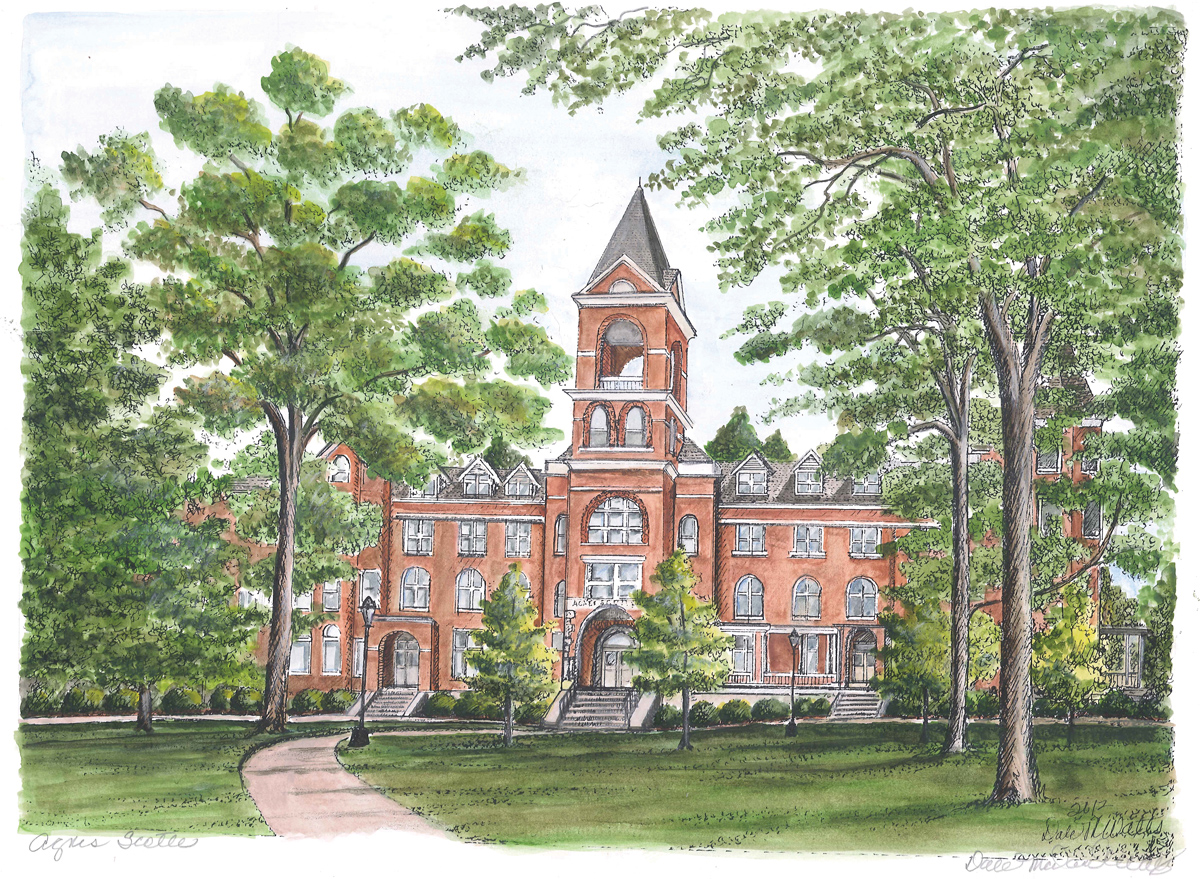
Dale McDaniel Watts
When it was built in 1891, Agnes Scott College’s Main Hall was an instant spectacle. It wasn’t for the High Victorian Gothic architecture, the bell tower, or the steam-heated interior corridors. The hall made headlines because it was the first building in DeKalb County to have electricity—described as “startling” to the town. The community would often gather at the building’s base, simply to see the lights come on.
Fast-forward 133 years, and Agnes Scott Hall, as it’s formally called, will soon draw the majority of its electricity from solar power. The shift is part of a broader, multiphase renovation that will cost Agnes Scott College north of $30 million.
The private women’s liberal arts college, which sits on 100 acres and hosts a student body of roughly 1,000, is no stranger to alternative energy sources. Campbell Hall and Rebekah Scott Hall are both heated and cooled by geothermal systems, and in 2013, the college debuted five solar arrays on a variety of buildings as part of Georgia Power’s Advanced Solar Initiative. Those panels are still in use; combined with the newest installations, which will switch on in time for students’ return in August, they’ll help save Agnes Scott $20,000 in annual energy costs.
According to Kimberly Reeves, the college’s executive director of sustainability, this new solar installation is found not on Main Hall’s roof but atop a parking deck half a city block away. The new panels will produce almost twice as much energy as the 2013 installation: 184 kilowatt-hours per year, enough to power another 17 American homes for a year—and to offset 58 percent of the power used by Main Hall. The arrays will also help advance Agnes Scott’s goal of being carbon-neutral by 2037.
Main Hall stands five stories tall and houses the office of the dean of students, the president’s office, and three levels of student housing. Surprisingly, one thing the dorms have never had—until now—is air-conditioning.
“It’s important to know we’re still seeing a reduction in carbon emissions, even though we’re bringing these very large pieces of [HVAC] equipment in,” says Reeves, who once lived in the Main Hall dorms with “a lot of fans” while in college. “So we’re really moving into the 21st century.”
This article appears in our July 2024 issue.














